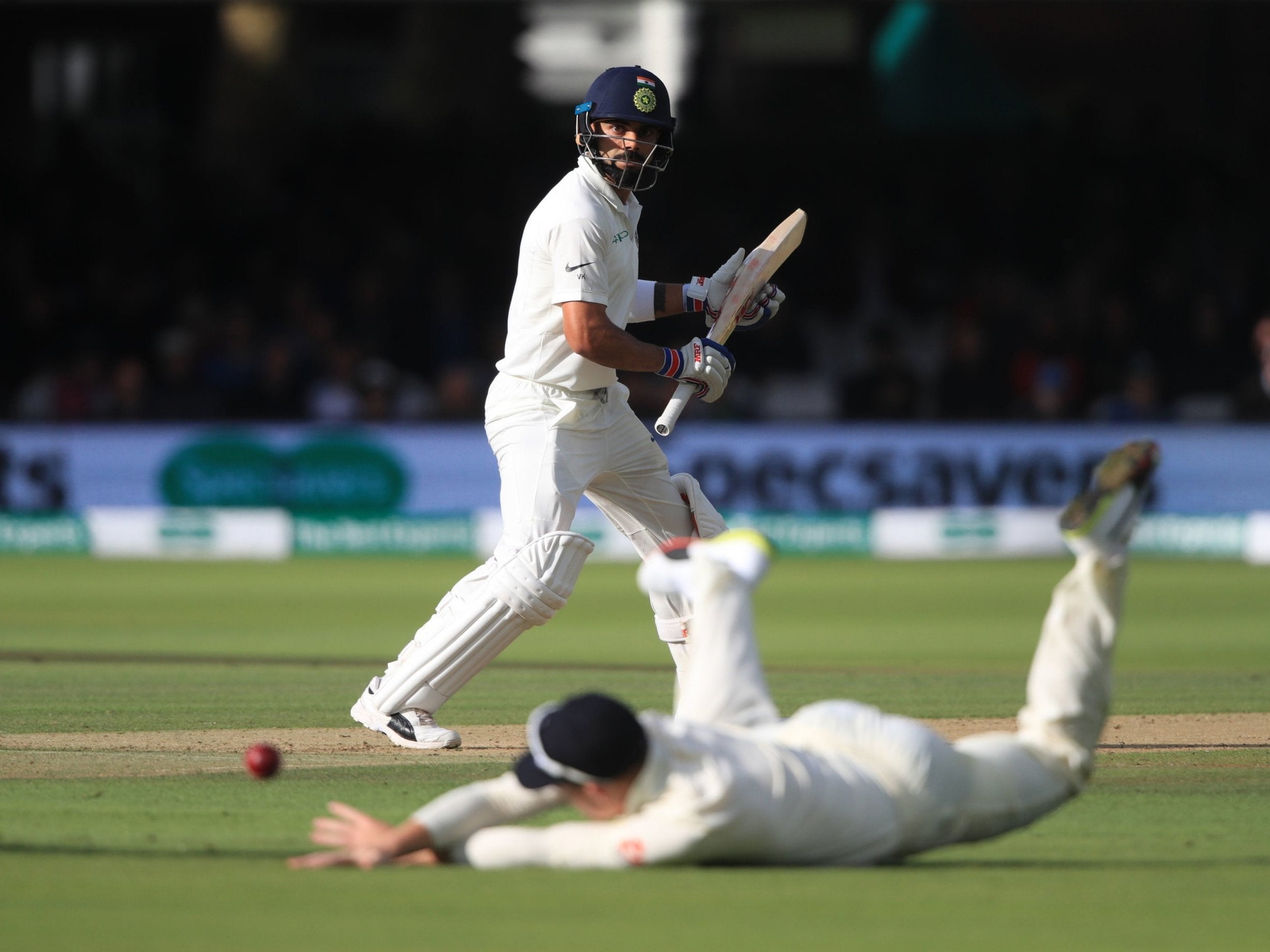James Anderson takes full advantage of swing conditions as England skittle India for 107
England yet to bat, India 107 all out: In conditions as lively as these, three extended days should be plenty of time for England to force a result

Your support helps us to tell the story
From reproductive rights to climate change to Big Tech, The Independent is on the ground when the story is developing. Whether it's investigating the financials of Elon Musk's pro-Trump PAC or producing our latest documentary, 'The A Word', which shines a light on the American women fighting for reproductive rights, we know how important it is to parse out the facts from the messaging.
At such a critical moment in US history, we need reporters on the ground. Your donation allows us to keep sending journalists to speak to both sides of the story.
The Independent is trusted by Americans across the entire political spectrum. And unlike many other quality news outlets, we choose not to lock Americans out of our reporting and analysis with paywalls. We believe quality journalism should be available to everyone, paid for by those who can afford it.
Your support makes all the difference.As one deluge passed, another arrived. At 5.10pm, the clouds finally cleared over Lord’s, allowing the second Test to resume after almost two days in soggy abeyance. For India, however, the clatter of rain was merely replaced by a clatter of wickets: bowled out in 35.2 overs in front of a baying crowd tipsily finding its voice. By stumps, a game that had seemed to be leaking towards a draw was swinging decisively England’s way.
Swing was the operative motif here. The weather has been virtually a third protagonist in this game, and ‘pathetic fallacy’ is a decent description of the prospects for batting here, in conditions more akin to April in Scarborough than August in St John’s Wood. Few of the Indians will have faced a challenge of this magnitude before: the cold, the ball moving extravagantly both ways, the six-man slip cordon, the greatest swing bowler of the 21st century steaming in after two days’ unwanted rest.
James Anderson had already had his fun earlier in the day, reducing India to 10-2 after six overs with a couple of gorgeous deliveries to extract India’s openers. Now he picked up where he had left off, adding three more in the evening to finish with 5-20 and reduce India’s innings to wet rubble. In between, Chris Woakes – restored to the side in the absence of Ben Stokes – offered up a stern cross-examination of his own. A mere two wickets were scant reward for a brilliant spell in which India could only play him with the edge, the whole edge and nothing but the edge.

It all felt magnificently, miraculously munificent, given that just a couple of hours earlier, as puddles accumulated on the outfield, you feared not only for the prospects of play today, but for the prospects of ever playing cricket at Lord’s again. The rain was biblical, the clouds angry, the chill chastening, and it seemed as if the comical run-out of Che Pujara would be the last meaningful action of the day.
India’s third wicket, coming in a short break in the weather just after lunch, somehow encapsulated the maddening stop-start feel to the day. Pujara pushed the ball into the covers, Virat Kohli scampered down the pitch only to change his mind, and Pujara was left hopelessly marooned as debutant Ollie Pope jogged up to the bails and knocked them off. A stormy downpour immediately followed, although you fancy nothing like as stormy as the look Pujara will have given Kohli when the pair returned to the pavilion.

And so Kohli resumed his innings later that evening in debit, although with the pleasant memories of Edgbaston last week to sustain him. He hung around for a good hour against Anderson and the disappointing Stuart Broad, but the introduction of Woakes shifted him out of his comfort zone. Woakes had Kohli on an oatcake: playing and missing, hopping and jumping, edging the ball past the slips, through the slips, on the bounce.
Partly Kohli earns his good fortune in these situations. He has a winsome habit of opening the face against the swinging ball, softening the outside half of the bat on contact, breaking the wrists, and more often than not sending the ball downwards rather than in the air. But the one time he closed the face, trying to turn a straight ball to leg, the late swing found his leading edge, and plopped into the hands of Jos Buttler at second slip.
For Buttler, it was an instant reprieve after he had let an edge fly past him the previous ball, and remarkably in Woakes’s next over he would pull off the same trick. Hardik Pandya drove hard, only for Buttler to miss the edge completely. The next ball Pandya defended, and with a minimum of movement required, Buttler was able to cling on low with both hands. Held two, dropped two. He’d never last as an actual butler.

Sam Curran chipped in by bowling Dinesh Karthik off the inside edge, whereupon Anderson returned to prise out the tail, moving him within one wicket of becoming only the second man – after Muttiah Muralitharan – to take 100 Test wickets at a single ground. It was India’s lowest score at Lord’s for 40 years.
At the end of which, India’s chances of levelling the series look remote. And an England victory is still by no means a certainty, with further rain forecast for Monday. Nevertheless, in conditions as lively as these, three extended days should be plenty of time for England to force a result, especially if they compile a significant first-innings lead in sunnier conditions on Saturday. To bastardise the old Richie Benaud line, maybe winning Test matches is 90 per cent luck and 10 per cent skill. Day three, with the ball in Indian hands, would be the perfect time for them to display the 10 per cent.
Join our commenting forum
Join thought-provoking conversations, follow other Independent readers and see their replies
Comments